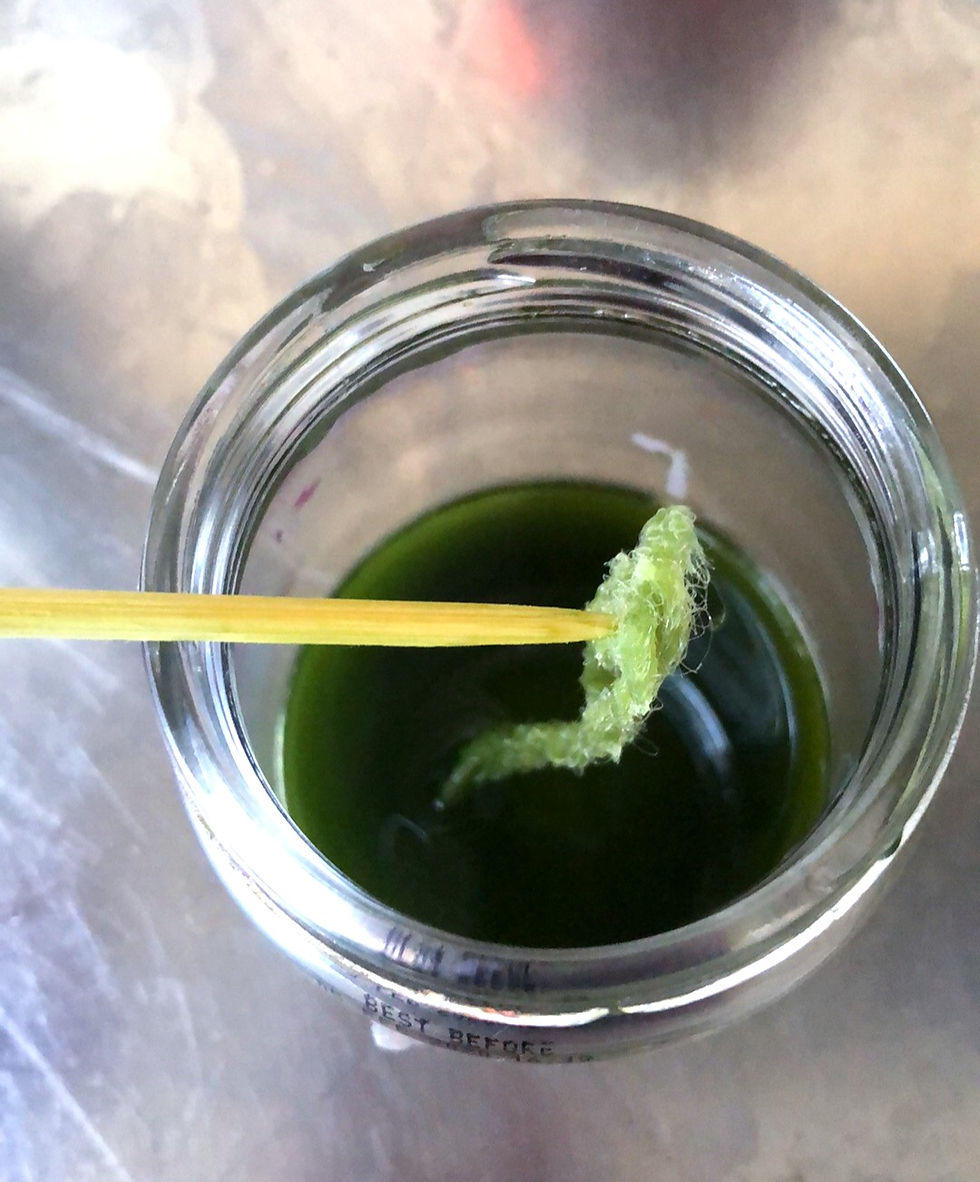Natural Dyeing - Going Green!
- Carol Palmer

- May 19, 2019
- 4 min read
Over the last few months my class has be really into dyeing. We have mostly been working with natural dyes, like the turmeric we used for out beeswax wraps, and have been fascinated by the range of colours we can find in our local environment. The one colour that has pretty well alluded us though, was green. Surprising, right? You would think that will all the greens in nature; it would be easy to make a dye from them. Not so. Green is the natural dyers biggest challenge. Until last week.
We had a teacher-only day at school and I got chatting to Stuart, the chemistry teacher from our adolescent program, (okay, I stalked him until he answered all my questions). I asked him why, when it is so easy to get the green out of leaves, (think spinach water, grass stains) it is so hard to get a nice rich green to stick when you want it to.
He said that the chlorophyll needs to be extracted by a medium other than water and then the molecules need to be surrounded by a metal to form a chelate that would then bond with the fibres of the wool. Simple!
He suggested and alcohol extraction – and here’s where the fund starts. Alcohol boils at a lower temperature than water (around 85C) so you don’t need much heat to make it boil. Stuart suggested I put some leaves into a boiling tube, pour in a colourless alcohol (I used isopropyl alcohol) and stand it in a cup of boiling water. I tried it at home with my children that day and the alcohol boiled almost immediately!

You can hear how excited I am by this in my voice in the video below.
Sure enough, the green colour left the leaves and went into the liquid. But…
Then I turned my back to refill the kettle and refresh the boiling water, and disaster struck. You remember how before the universe was formed, there was nothing but cold and blackness? Then something happened and everything came into being. And you remember the bit about the universe giving everything laws: when you are hot you shall expand, etc.? And how the earth formed a crust but the hot liquid under that crust still had to follow its laws so it broke out? Well, I must have stuffed the leaves pretty hard into the boiling tube so when the alcohol boiled underneath them, it couldn’t expand. But it had to follow its law so the boiling, alcohol infused, plug of silverbeet came firing out of the tube at an immense rate of knots and splattered onto my kitchen wall.
Positives from this are:
1. The boiling tube was facing the wall, not the children.
2. The universal laws are working well.
3. The green liquid stained the paint on my white wall, confirming that we had successfully extracted the pigment from the silverbeet.
We were a little more careful with how we packed the leaves for the second attempt (much to my children’s disappointment) and we achieved another vial of bright green liquor.
We added a tiny amount of copper, the necessary metal, which also happens to assist greenie shades, and a small skein of wool yarn. The yarn took on the colour immediately but we left it overnight to give it a chance to really sink in.

The next morning we rinsed the yarn and were left with a really nice spinach green colour. Eureka!

I took the yarn into school and told the children the story and also my concern that in all the years of natural dyeing, no-one had thought of this process. It seemed like, considering the convoluted recipes that have been used for many of the prized dyes of old, we had solved this ancient challenge far too easily. We checked the considerable stack of natural dyeing books in our classroom and could find no reference to this method. We decided the only other answer to our mystery was that the dye is fugitive – that is, it won’t stay in the wool. I gave the yarn a really good wash when I took it out of the dye so we know it is wash-fast. What we don’t know is whether it is light-fast, but we have a test for this.
We took a sample of the yarn and made a test card for it. The card divides the sample into three sections. One is sealed from the light to act as a control. The second remains open for a week and is then sealed and the third remains open for a month. The card is placed in direct sunlight and after the month we open it up and compare the colours. If all three sections are the same colour, we can say the dye it light fast and we have a winner. If they have faded, we know the dye is fugitive. This does not mean it’s a failure, we just have to think more carefully about how we use it.


Our test card is stuck to the classroom window. It’s taking all of my willpower not to peak…I’ll let you know next month!









Hi there! I know this post is old, old, old, but I'm SO curious, how did the lightfast test go? I couldn't find an update, if there was one. I came upon this post while researching this same topic!